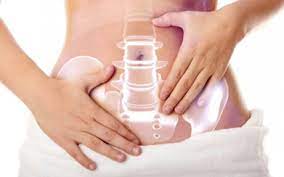Pelvic Physical Therapy covers a variety of dysfunctions from pain to incontinence. It has many possible causes and affects up to 20% of the population in the United States, including women and men.
Pelvic pain is quite often overlooked; 61% of women never have a diagnosis. 1 in 7 American women ages 15-80 experience some sort of pelvic pain and physical therapy can help.
Katie Reynolds and Kennan Wyne have specialized training in internal and external examinations of the pelvic floor muscles to determine the tone and strength of the muscles and malalignments of the pelvic girdle.
Physical therapy can help retrain these muscles through Kegel exercises and by keeping a bladder diary. Additional prescribed exercises will help improve/maintain bladder and bowel control, heighten sexual response, maintain strength, tone, and elasticity to support your organs against gravity.
With the help of our specialists, our patients will need a minimum of three to six visits. Usually, after therapy, you are able to sit pain-free, have intercourse without feeling pain, as well as regaining control of your bladder and bowel functions.
Be the Boss of Your Bladder and Bowel!
Urinary Incontinence (UI) is the weakening of the pelvic floor muscles due to trauma/injury, pain, or malalignment of the pelvic bones.
Physical Therapy can help decrease the frequency of having to go and accidental leakage. With the help of biofeedback, modalities (moist heat), and manual therapy (hands-on approaches), most patients will see results in as little as four to eight visits. Urinary Incontinence types are defined as:
Urge: This is when urine loss may occur after a strong and sudden desire to urinate. This happens with only a few seconds or minutes of warning causing the bladder to contract when it is not time.
Stress: This is when a small amount of urine loss occurs with physical exertion. This could be with a cough, sneeze, lift or laugh.
In the past, everyone thought that Kegel exercises were the cure for UI and when leaking continued to occur, frustration forms into a “no hope” attitude. Katie and Kennan treat their patients beyond Kegels. As important as these exercises are it is more important when to perform Kegels in conjunction with exercises for maximum benefit.
Fecal Incontinence (FI) is the recurrent uncontrolled passage of fecal material and certainly can have its detrimental impact on lifestyle and functioning compared to urinary incontinence. FI is also attributed to conditions associated with pelvic floor weakness.
Constipation Blues?

Constipation can affect many individuals and cause increased pain in the abdomen as well as acid reflux. Physical therapy can be beneficial in helping you have a good bowel movement and decrease discomfort. Through education in how the bowels function and abdominal massage, along with other techniques, we can help you with this unpleasant experience.
What to Expect.
Katie or Kennan will create an individualized program that will help them identify what factors aggravate your symptoms based on your diagnosis.
They will incorporate the essential components mentioned previously by closely monitoring diet and fluid intake, bladder irritability, activities of daily living, stressors, and musculoskeletal components.
For patients that have difficulty identifying and isolating the muscles of the pelvic floor, the use of our Biofeedback machine can be used to pick up small electrical stimuli in the muscles and translate these signals into a visual bar graph. As the contraction increases, the visual bar graph gives our patients “feedback” contraction strength and if performed correctly.

Each of our patients are then instructed in a home exercise program designed specifically for their condition, giving them the power and knowledge to regain their quality of life!

